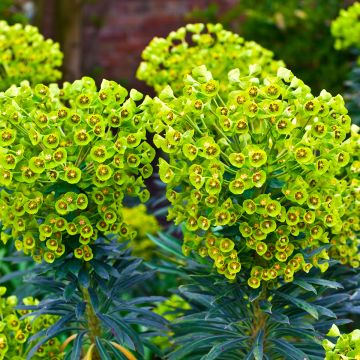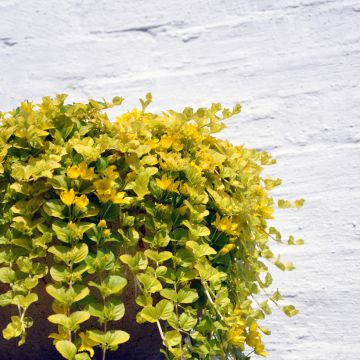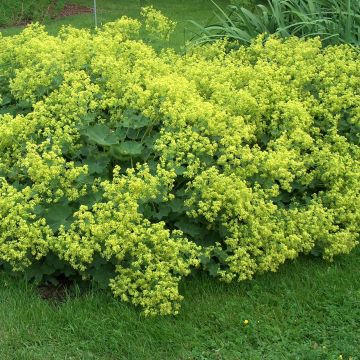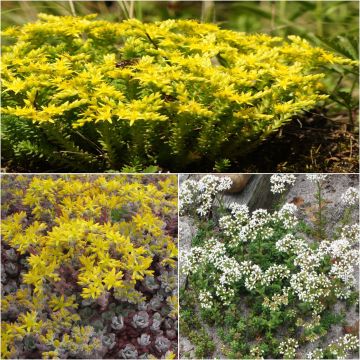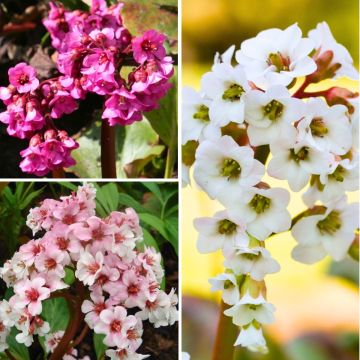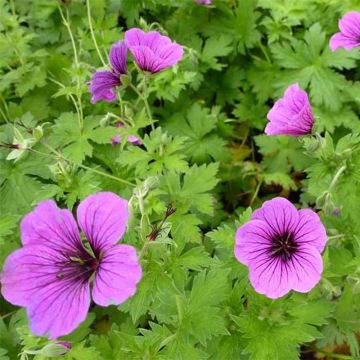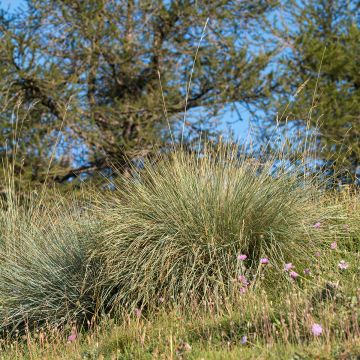

Tanacetum vulgare Isla Gold
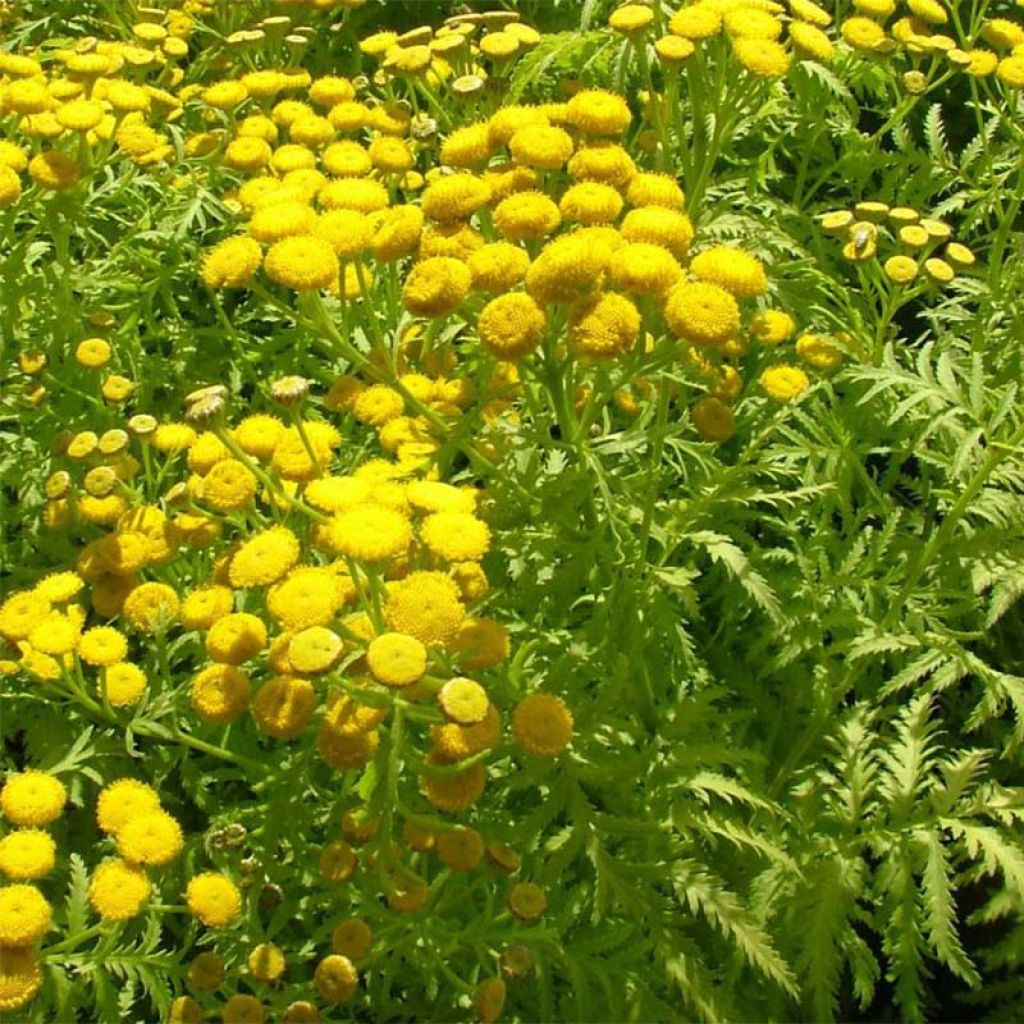

Tanacetum vulgare Isla Gold
Tanacetum vulgare Isla Gold
Tanacetum vulgare Isla Gold
Common Tansy, Golden Buttons, Bitter Buttons, Cow Bitter, Garden Tansy
These lovely flowers have arrived without any issues and seem to be settling quietly in the clayey part that welcomes them. The black aphids have taken an interest in them, but I took care of them (without chemical treatment). Can't wait for the tillers!
Estelle, 13/07/2021
Why not try an alternative variety in stock?
View all →This plant carries a 12 months recovery warranty
More information
We guarantee the quality of our plants for a full growing cycle, and will replace at our expense any plant that fails to recover under normal climatic and planting conditions.
From €5.90 for pickup delivery and €6.90 for home delivery
Express home delivery from €8.90.

Does this plant fit my garden?
Set up your Plantfit profile →
Description
Tanacetum vulgare 'Isla Gold' is a very pretty variety of tansy, distinguished by its golden foliage from spring to autumn, as well as its more moderate growth and less exuberant temperament than its wild cousin. This truly sun-loving perennial blooms in summer, in the form of flat inflorescences composed of numerous small golden heads. Easy to grow in any soil that is not too dry and in the sun, in a pot or in the ground, without maintenance, this fragrant plant is highly appreciated in a yellow flower bed, in partial shade.
Tansy is a robust perennial plant, belonging to the family Asteraceae, which grows spontaneously in the wild along country roads in Europe and as far as Siberia.
Smaller than the typical species, the 'Isla Gold' variety will not exceed 60 to 70 cm (24 to 28in) in all directions. It is also more restrained and does not self-seed as freely. Tanacetum vulgare Isla Gold has upright stems that bear finely cut foliage, reminiscent of yarrow or certain ferns, which are a stunning bright yellow colour, even in summer. The plant produces hundreds of small round heads from July to September, which are a beautiful bright yellow, gathered in flat and round inflorescences. Its leaves and flowers are slightly fragrant, but slightly less fragrant than the wild species. The plant spreads slowly thanks to its weakly trailing rootstocks. You can grow it in a pot or in the ground by cutting off the shoots. It is a hardy plant, at least down to -15°C (5°F), requiring little maintenance.
Tansy 'Isla Gold' pairs well with red blooms, such as those of Polygonum speciosum or Echinacea 'Vintage Wine', as well as purple foliage. It thrives in ordinary soil that is not too dry in wildflower beds and slightly wild areas, alongside robust perennials such as large daisies, comfrey, helenies, Helianthus salicifolius, or even tall thistles (Cardoon, Globe thistle, Eryngium planum...). It also pairs well with viper's bugloss (Echium vulgare) and chamomile (Chamaelum nobile 'Flore Pleno'). Its flowers, whether fresh or dried, will brighten up your bouquets.
Report an error about the product description
Tanacetum vulgare Isla Gold in pictures


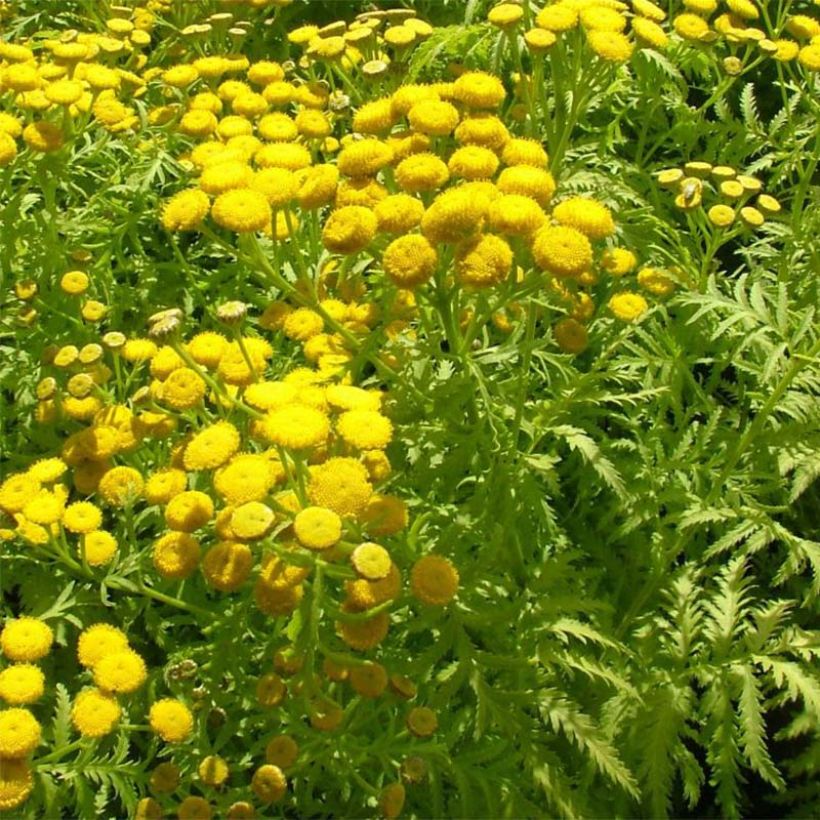

Flowering
Foliage
Plant habit
Botanical data
Tanacetum
vulgare
Isla Gold
Asteraceae
Common Tansy, Golden Buttons, Bitter Buttons, Cow Bitter, Garden Tansy
Cultivar or hybrid
Other Perennials A to Z
Planting and care
Plant Tansy' Isla Gold' in full sun or, if possible, in partial shade in a warm climate, in a sheltered location. It thrives in all types of soil, including limestone, but prefers fertile, moist, and well-drained soil that is not too dry in summer. Planting takes place in spring (March to June) or autumn (September to October).
Space the young plants 50 cm (20in) apart in all directions. Dig a hole (3 times the volume of the root ball), place the root ball in it, and cover with fine soil. Firmly press down and water. Regularly hoe and weed.
Planting period
Intended location
Care
-
, onOrder confirmed
Reply from on Promesse de fleurs
Summer flowering perennials
Haven't found what you were looking for?
Hardiness is the lowest winter temperature a plant can endure without suffering serious damage or even dying. However, hardiness is affected by location (a sheltered area, such as a patio), protection (winter cover) and soil type (hardiness is improved by well-drained soil).

Photo Sharing Terms & Conditions
In order to encourage gardeners to interact and share their experiences, Promesse de fleurs offers various media enabling content to be uploaded onto its Site - in particular via the ‘Photo sharing’ module.
The User agrees to refrain from:
- Posting any content that is illegal, prejudicial, insulting, racist, inciteful to hatred, revisionist, contrary to public decency, that infringes on privacy or on the privacy rights of third parties, in particular the publicity rights of persons and goods, intellectual property rights, or the right to privacy.
- Submitting content on behalf of a third party;
- Impersonate the identity of a third party and/or publish any personal information about a third party;
In general, the User undertakes to refrain from any unethical behaviour.
All Content (in particular text, comments, files, images, photos, videos, creative works, etc.), which may be subject to property or intellectual property rights, image or other private rights, shall remain the property of the User, subject to the limited rights granted by the terms of the licence granted by Promesse de fleurs as stated below. Users are at liberty to publish or not to publish such Content on the Site, notably via the ‘Photo Sharing’ facility, and accept that this Content shall be made public and freely accessible, notably on the Internet.
Users further acknowledge, undertake to have ,and guarantee that they hold all necessary rights and permissions to publish such material on the Site, in particular with regard to the legislation in force pertaining to any privacy, property, intellectual property, image, or contractual rights, or rights of any other nature. By publishing such Content on the Site, Users acknowledge accepting full liability as publishers of the Content within the meaning of the law, and grant Promesse de fleurs, free of charge, an inclusive, worldwide licence for the said Content for the entire duration of its publication, including all reproduction, representation, up/downloading, displaying, performing, transmission, and storage rights.
Users also grant permission for their name to be linked to the Content and accept that this link may not always be made available.
By engaging in posting material, Users consent to their Content becoming automatically accessible on the Internet, in particular on other sites and/or blogs and/or web pages of the Promesse de fleurs site, including in particular social pages and the Promesse de fleurs catalogue.
Users may secure the removal of entrusted content free of charge by issuing a simple request via our contact form.
The flowering period indicated on our website applies to countries and regions located in USDA zone 8 (France, the United Kingdom, Ireland, the Netherlands, etc.)
It will vary according to where you live:
- In zones 9 to 10 (Italy, Spain, Greece, etc.), flowering will occur about 2 to 4 weeks earlier.
- In zones 6 to 7 (Germany, Poland, Slovenia, and lower mountainous regions), flowering will be delayed by 2 to 3 weeks.
- In zone 5 (Central Europe, Scandinavia), blooming will be delayed by 3 to 5 weeks.
In temperate climates, pruning of spring-flowering shrubs (forsythia, spireas, etc.) should be done just after flowering.
Pruning of summer-flowering shrubs (Indian Lilac, Perovskia, etc.) can be done in winter or spring.
In cold regions as well as with frost-sensitive plants, avoid pruning too early when severe frosts may still occur.
The planting period indicated on our website applies to countries and regions located in USDA zone 8 (France, United Kingdom, Ireland, Netherlands).
It will vary according to where you live:
- In Mediterranean zones (Marseille, Madrid, Milan, etc.), autumn and winter are the best planting periods.
- In continental zones (Strasbourg, Munich, Vienna, etc.), delay planting by 2 to 3 weeks in spring and bring it forward by 2 to 4 weeks in autumn.
- In mountainous regions (the Alps, Pyrenees, Carpathians, etc.), it is best to plant in late spring (May-June) or late summer (August-September).
The harvesting period indicated on our website applies to countries and regions in USDA zone 8 (France, England, Ireland, the Netherlands).
In colder areas (Scandinavia, Poland, Austria...) fruit and vegetable harvests are likely to be delayed by 3-4 weeks.
In warmer areas (Italy, Spain, Greece, etc.), harvesting will probably take place earlier, depending on weather conditions.
The sowing periods indicated on our website apply to countries and regions within USDA Zone 8 (France, UK, Ireland, Netherlands).
In colder areas (Scandinavia, Poland, Austria...), delay any outdoor sowing by 3-4 weeks, or sow under glass.
In warmer climes (Italy, Spain, Greece, etc.), bring outdoor sowing forward by a few weeks.




































